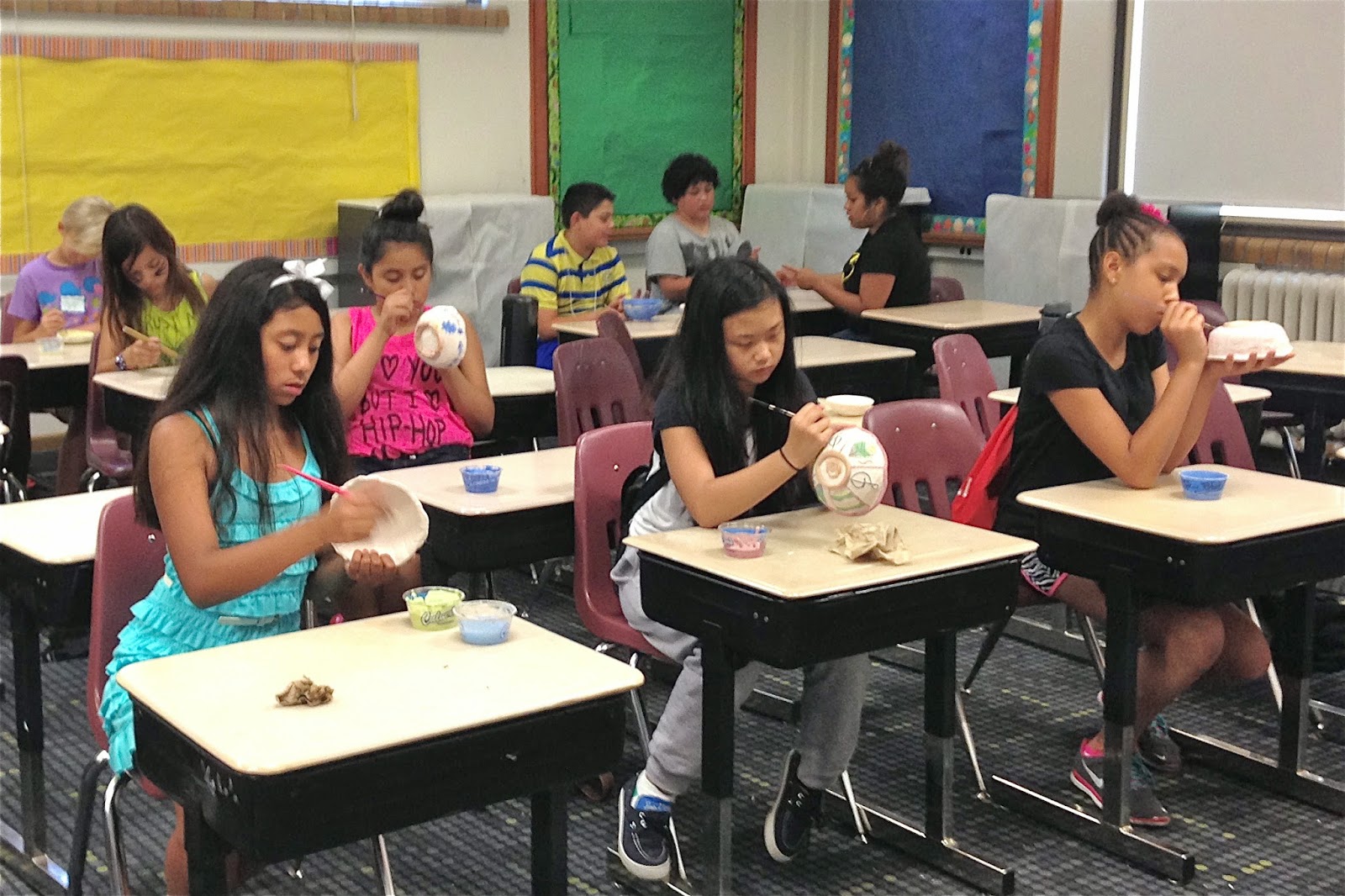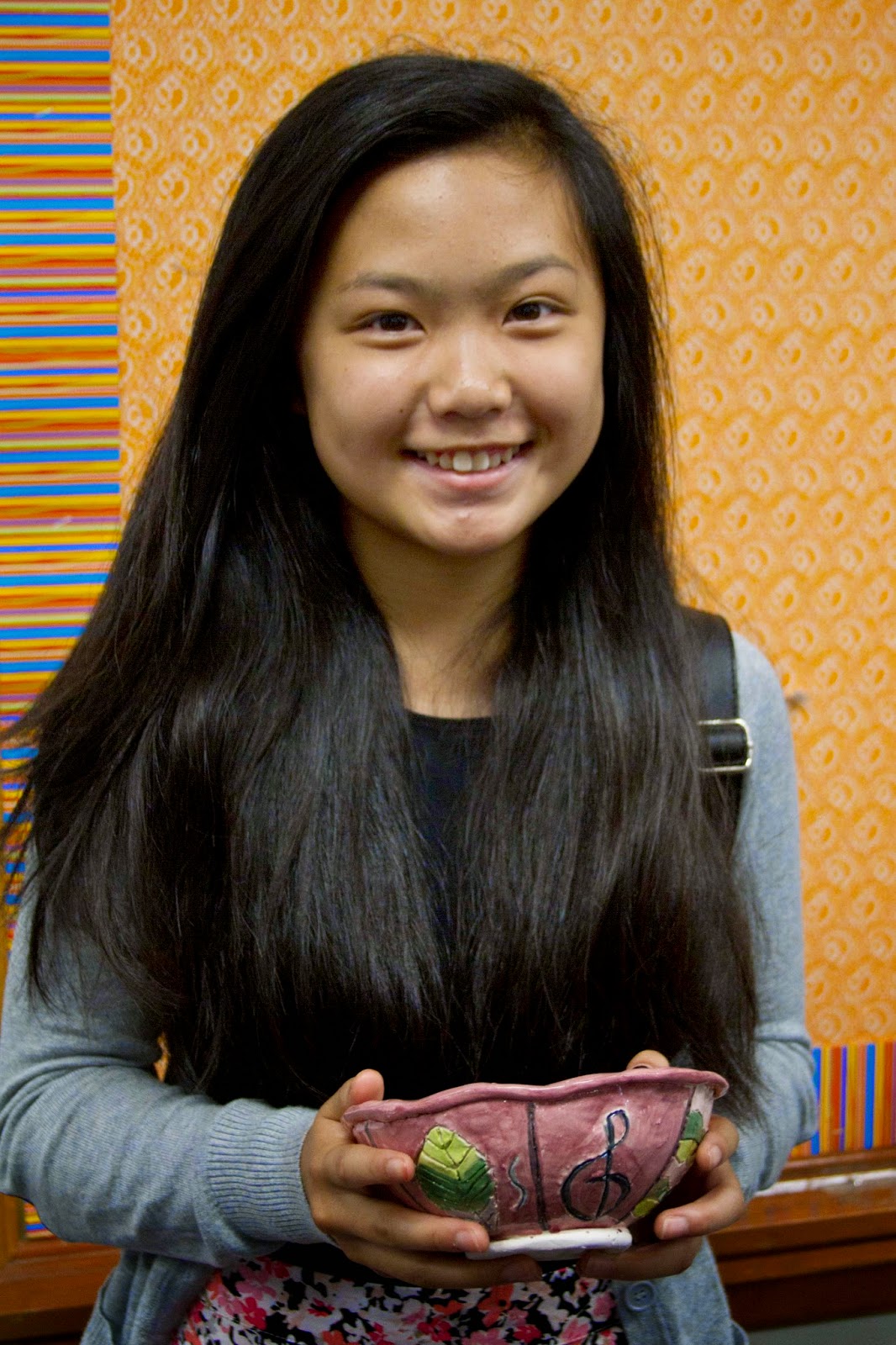 I have been installing the custom tiles in their new home and am happy to report they've found themselves to be quite comfortable there. It was both exciting and a relief to see the design taking shape. Making sure the tiles will fit in their given space is a bit tricky since the shrinkage rate varies from 15-18%. So to allow for this, I made a few extra pieces of differing widths.
I have been installing the custom tiles in their new home and am happy to report they've found themselves to be quite comfortable there. It was both exciting and a relief to see the design taking shape. Making sure the tiles will fit in their given space is a bit tricky since the shrinkage rate varies from 15-18%. So to allow for this, I made a few extra pieces of differing widths.


I laid out the tiles and prepped the area. Then I slapped some mortar up on the wall. Diving in with the mortar is a sort of free-fall experience, but there's no other way to do it. Piece by piece, like putting together a puzzle, I installed the mural backsplash. (The white spacers keep the tiles from sliding around until they set.) With that installed, I started on the row of hand painted design tiles mixed in with the plain tiles along the entire countertop. Factory made tiles are all identical which makes installation a breeze, but the handmade nature of custom tiles requires some patient manipulation. Then the mortar needs to harden before you can start in with the grout, so I cleaned up and headed home.

 Grouting seals the gaps and bonds the tiles together and keeps moisture from getting in. I chose a light sandy tone to blend in with the countertops, but many colors are available and changes the overall affect. The installation process involves pressing the grout in with a float, letting it set while keeping everything wiped down, and finally smoothing it out. For a final touch and added protection, I added some caulk. And that was that.
Grouting seals the gaps and bonds the tiles together and keeps moisture from getting in. I chose a light sandy tone to blend in with the countertops, but many colors are available and changes the overall affect. The installation process involves pressing the grout in with a float, letting it set while keeping everything wiped down, and finally smoothing it out. For a final touch and added protection, I added some caulk. And that was that.
The sun is rising over the hills this morning as the rooster crows in a newly tiled kitchen.


 The students selected a wide range of clay projects, cut out letters, matted signs, and put it the whole thing together. They took great pride in this endeavor, arranging, rearranging and even offering to wash the glass doors. I am looking forward to walking by this case every day on my way to class. Kudos to my students and their successful display!
The students selected a wide range of clay projects, cut out letters, matted signs, and put it the whole thing together. They took great pride in this endeavor, arranging, rearranging and even offering to wash the glass doors. I am looking forward to walking by this case every day on my way to class. Kudos to my students and their successful display!














































